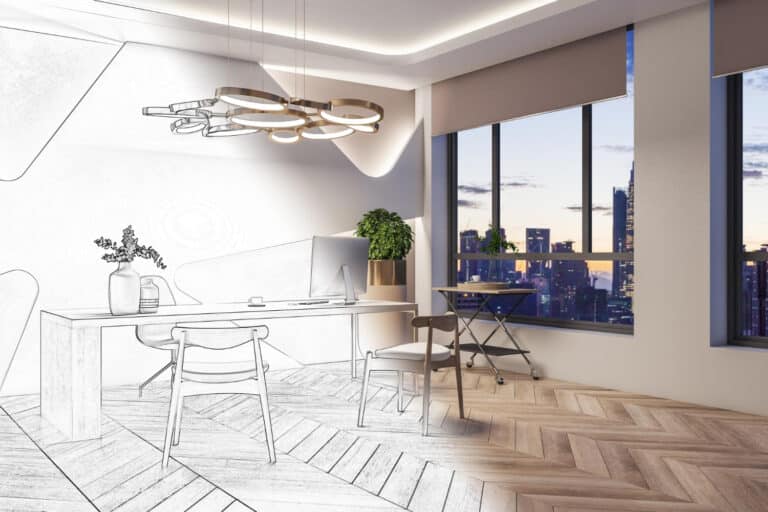Free Shipping On All Orders
Interior Design Assistant: Essential Skills and Responsibilities in 2024

The world of interior design is constantly evolving, with new trends and styles emerging every day. As an interior design enthusiast, you may be keen on starting a career in this creative field. Becoming an interior design assistant is an excellent entry point, allowing you to gain valuable hands-on experience in the industry and learn from accomplished professionals.
In this role, you’ll have the opportunity to work alongside experienced interior designers, contributing to a variety of design projects ranging from residential spaces to commercial settings. As an interior design assistant, you will play a crucial part in bringing a designer’s vision to life, while refining your skills and building a strong foundation for a successful career in interior design. Now, let’s dive into the details of what this role entails and how you can prepare for this exciting and rewarding profession.
Key Takeaways
- Interior design assistants play a pivotal role in the industry, providing valuable support to experienced designers.
- Strong communication, creativity, and technical skills are essential for success in this position.
- Pursuing an education in interior design, along with hands-on experience, can kick-start your career as an interior design assistant.
Job Responsibilities of an Interior Design Assistant
Design Prep

As an interior design assistant, you’ll be responsible for preparing design materials to support the lead designer. This may include gathering samples, creating mood boards, and conducting research on design trends. You’ll also be tasked with organizing and maintaining design resources, such as fabric samples, design software, and digital design catalogs.
Vendor Relations
Building strong vendor relationships is essential for a successful interior design project. You’ll be responsible for contacting vendors to obtain quotes, negotiating costs, and placing orders for materials and furnishings. Additionally, you’ll need to track shipments to ensure timely delivery, and communicate regularly with your team to keep everyone informed about the progress of the project.
Designer Support
Your primary responsibility as an interior design assistant is to provide support to the lead designer. This includes assisting with client meetings, taking detailed notes, and ensuring a smooth project workflow. You may also be asked to help with technical aspects of a project, such as drafting floor plans or creating 3D renderings using design software. By efficiently handling these tasks, you allow the lead designer to focus on the creative aspects of the project, resulting in a well-executed and successful design.
7 Essential Skills and Knowledge for an Interior Design Assistant
1. Design Software Proficiency

As an interior design assistant, it’s important to be proficient in industry-standard design software. Familiarize yourself with tools like AutoCAD, SketchUp, and Adobe Creative Suite, as they will help you create and share visualizations of your designs. This proficiency not only makes your work more efficient but also ensures you communicate effectively with colleagues and clients.
2. Creative Problem Solving
In the world of interior design, unforeseen challenges often arise. To tackle these obstacles, you need to possess creative problem-solving skills. This includes assessing different design options, adapting existing concepts, and coming up with innovative solutions that meet both the client’s vision and budget requirements. By thinking critically and unconventionally, you’ll be able to overcome any hurdles that come your way.
3. Knowledge of Design Principles
A strong foundation in design principles is crucial for an interior design assistant. This includes understanding elements such as color theory, balance, proportion, and rhythm. Familiarize yourself with various design styles and trends to create visually appealing, functional, and comfortable spaces. Additionally, being knowledgeable about materials, furnishings, and lighting will streamline your decision-making process and enhance your designs. Remember, mastering these principles is key to a successful interior design career.
Educational Requirements for Interior Design Assistants
4. Degree Requirements
To become an interior design assistant, you will typically need a minimum of an associate degree in interior design, though a bachelor’s degree is often preferred by employers. Your coursework should focus on key topics like color theory, design principles, architectural history, and space planning. Some programs also offer specialized courses in areas like sustainable design, residential design, or hospitality design.
It is crucial to select an accredited program, as this will ensure that you receive a quality education and enable you to sit for the National Council for Interior Design Qualification (NCIDQ) exam, should you decide to advance in the field.
5. Internship Experience
Gaining hands-on experience is essential for interior design assistants, and internships are an excellent way to acquire this. Many interior design programs include internship opportunities as part of their curricula, but you can also seek out an internship on your own.
During your internship, you will work closely with experienced interior designers, gaining valuable insights into the industry. You will learn essential skills, such as interacting with clients, collaborating with vendors and contractors, and understanding the design process from concept to execution.
In summary, the educational requirements to become an interior design assistant include obtaining a degree in interior design and gaining internship experience. These are crucial steps in building a strong foundation for a successful career in the field.
Interior Design Assistant Workplace Environment
6. In-Office Work

As an interior design assistant, your office environment will be no stranger to creativity and inspiration. You’ll be surrounded by fabric samples, color swatches, and blueprints. Communication and collaboration are key components of your day-to-day life, as you work closely with fellow coworkers on projects, presentations, and brainstorming sessions.
Organization is a crucial aspect of the in-office space:
- Keep your desk tidy and functional
- Maintain a clear filing system
- Ensure all essential tools are accessible
Creating a comfortable and productive environment will help you excel in your role as an interior design assistant.
7. Field Work
Stepping out of the office and onto the field is an exciting part of being an interior design assistant. You’ll experience various on-site visits, from meeting clients and attending exhibitions to sourcing materials and observing installations.
While on the field, don’t forget to:
- Take notes and photographs
- Communicate effectively with clients and collaborators
- Dress appropriately for the specific location
Flexibility and adaptability are necessary when navigating different field work situations, ensuring successful execution and design solutions for your clients.
Career Path of an Interior Design Assistant
Entry Level
As an entry-level interior design assistant, you will start by gaining hands-on experience and understanding of the industry. Your tasks may include:
- Assisting lead designers with their projects
- Conducting research on design trends and materials
- Sourcing furniture and accessories
- Creating design presentations
Build your design knowledge and professional network during this phase in order to progress in your career.
Mid-Level
After a few years of experience, you can advance to a mid-level interior design assistant. Your responsibilities may expand to include:
- Managing client relationships and projects independently
- Collaborating with contractors, architects, and other industry professionals
- Developing and presenting design concepts to clients
- Overseeing the execution of design plans
This is the time to focus on refining your design skills and style, as well as expanding your professional network.
Advanced Level
Once you have built a strong portfolio and honed your skills, you may transition to an advanced-level interior design assistant, taking on significant responsibilities such as:
- Spearheading large-scale design projects
- Supervising junior designers and assistants
- Expanding your specialization or expertise in a particular design area
- Establishing strong industry connections and collaborations
Reaching this level of your career, you may even consider starting your own design firm to demonstrate your unique style and expertise.
Frequently Asked Questions
What are the duties of an interior design assistant?
Interior design assistants support interior designers by performing tasks such as drafting, sourcing materials, communicating with clients, and creating design plans.
What skills are required to be an interior design assistant?
Interior design assistants need skills such as creativity, communication, organization, time management, and attention to detail.
How can I become an interior design assistant?
To become an interior design assistant, you typically need a degree in interior design or a related field, as well as experience working in the industry. Networking and building a strong portfolio can also be helpful.
If you liked this post about 2000s interior design, don’t forget to follow us on Pinterest so you don’t miss any more interior design news!

